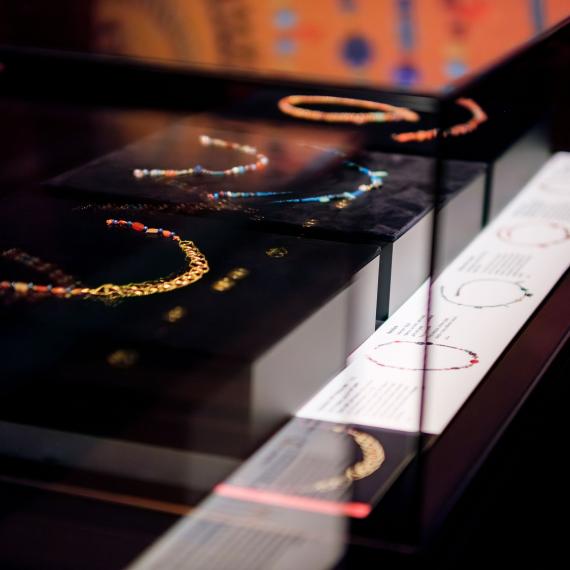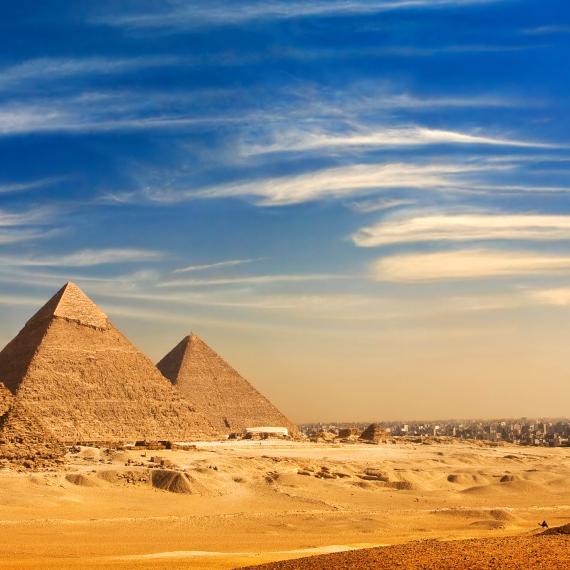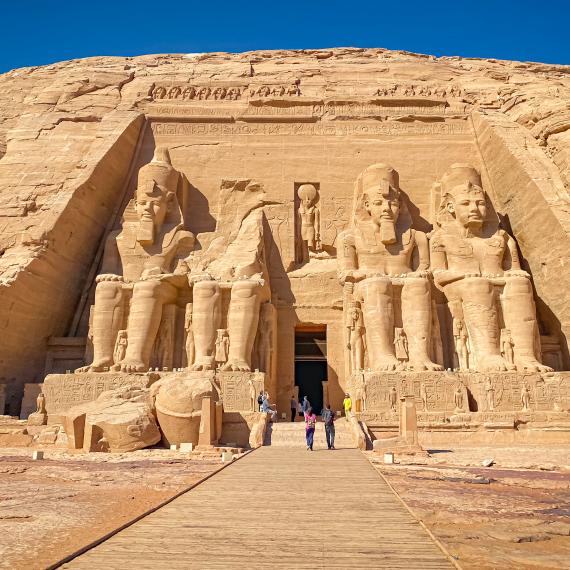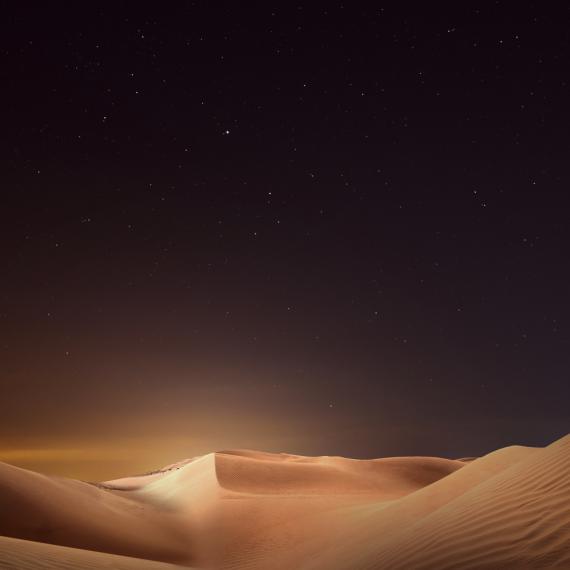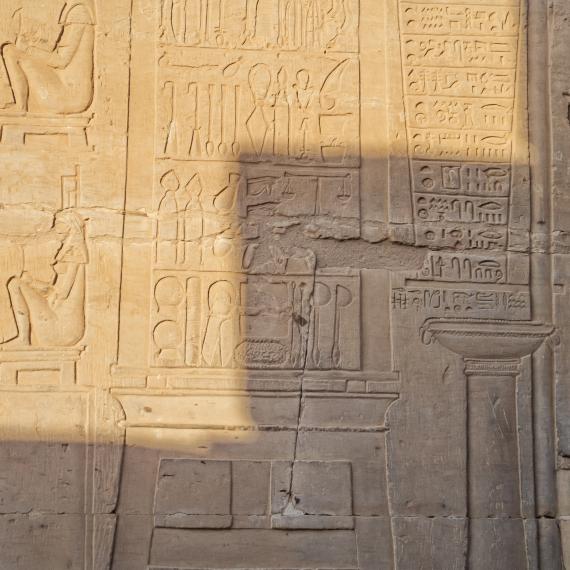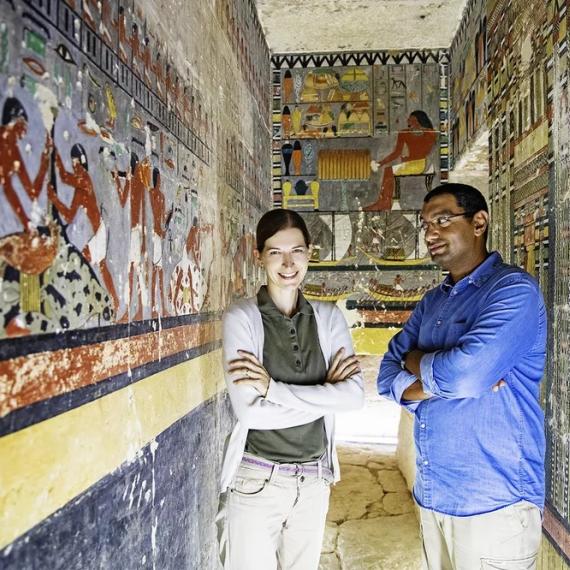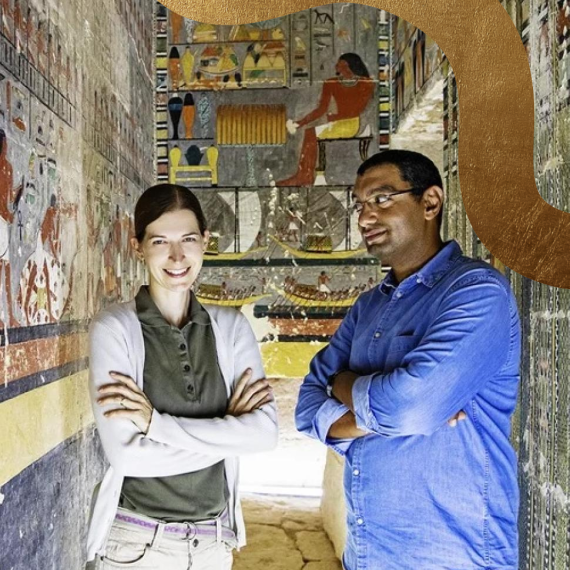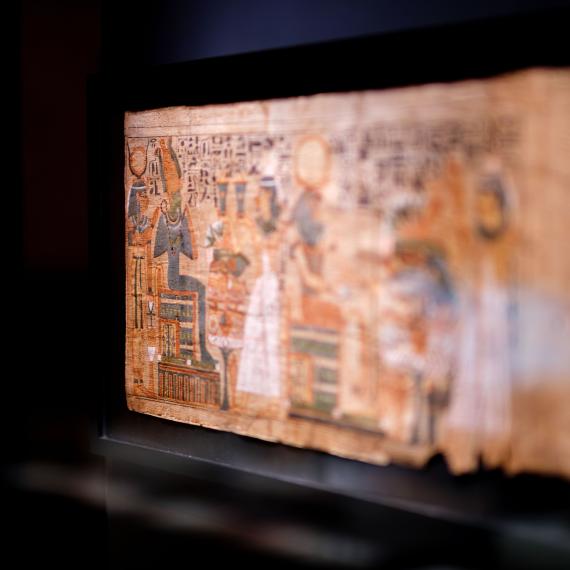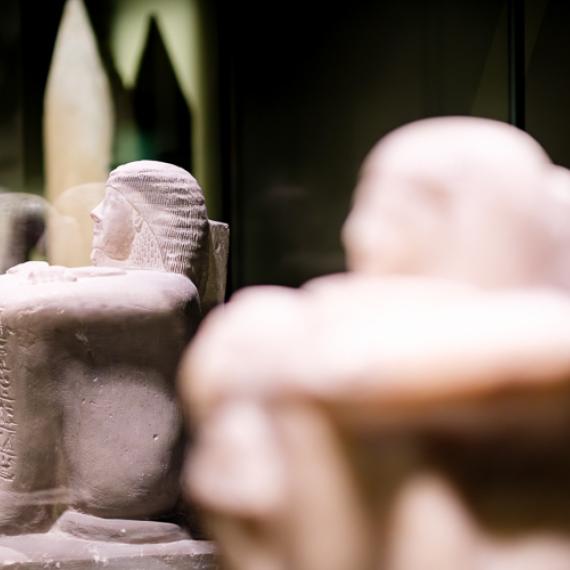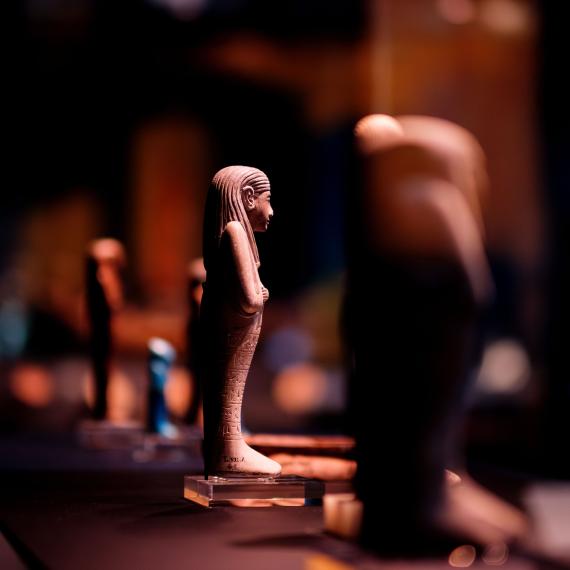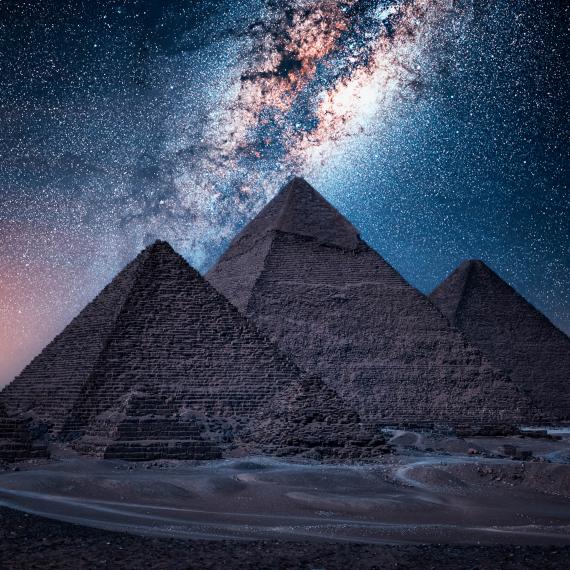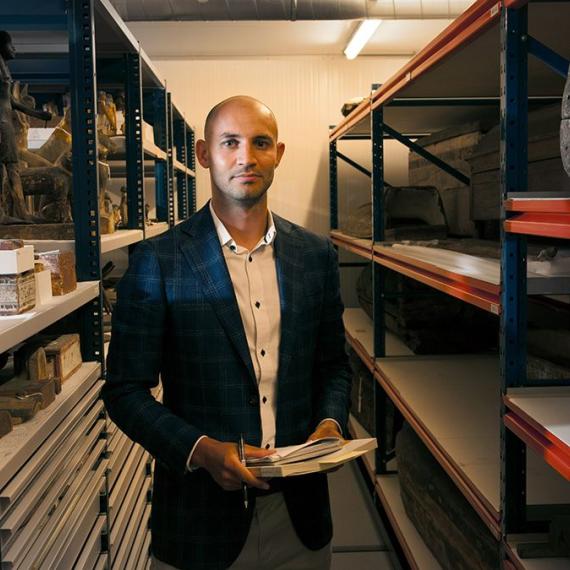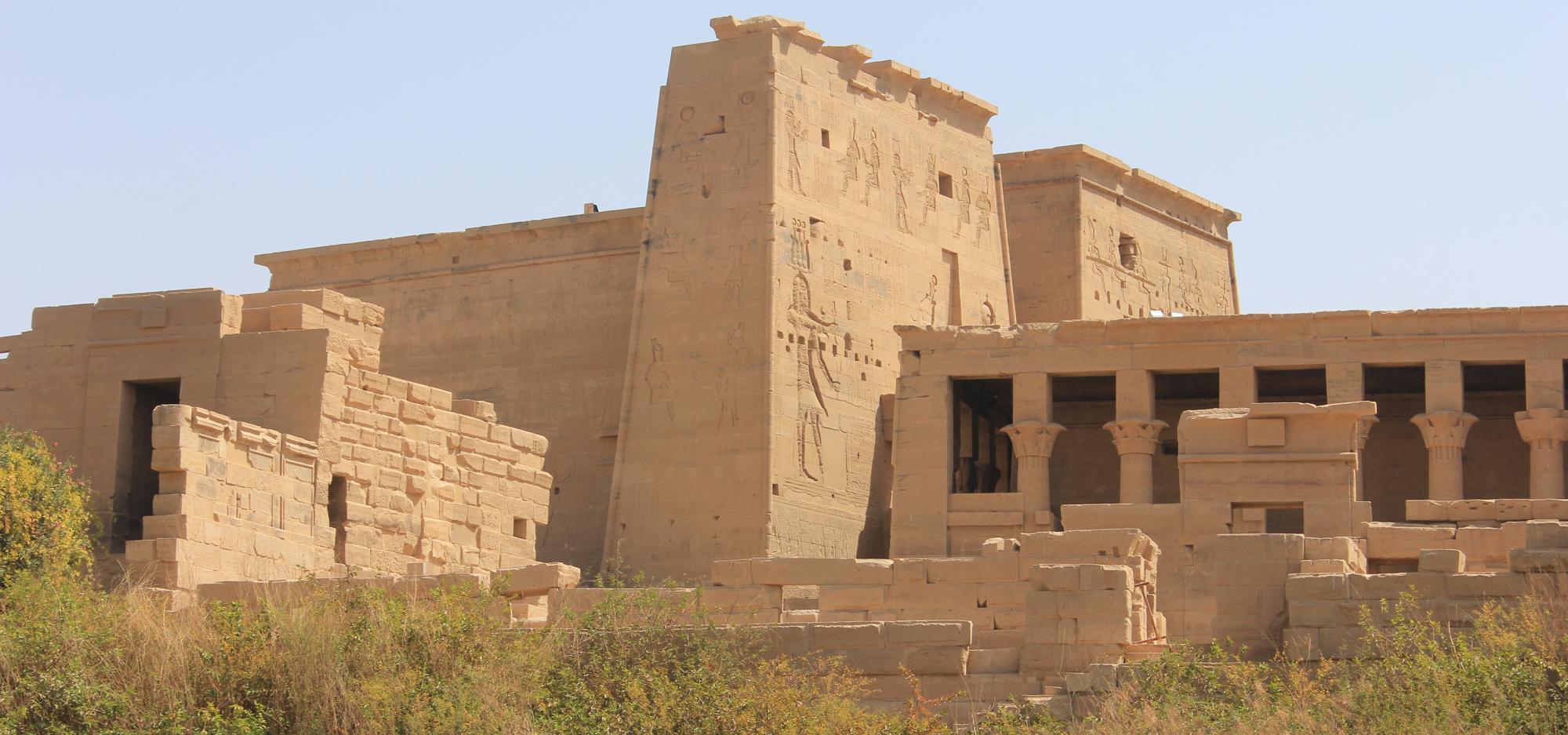
Temples and tombs by Dean Kubank
As part of our Afterlife Bar at WA Museum Boola Bardip, an event with evening access to the Discovering Ancient Egypt exhibition, we welcome a series of speakers to dive deeper into Egypt. Join us this week as we hear from Dean Kubank on Temples and Tombs.
Dean will lead us through the discovery of prominent temples of Ancient Egypt and their significance. Followed by a look at tombs and in particular the tomb of Paheri which has detailed reliefs of the everyday life of Ancient Egyptians.
Dean is a retired businessman with a strong interest in Ancient Egypt. Dean has been a member of the Ancient Egypt Society of WA for 25 years and has gained experience and insights during his multiple visits to Egypt.
Afterlife Bar
Uncover the secrets of Ancient Egypt after hours with exclusive access to the exhibition, pop up talks by experts and enthusiasts, in a transformed museum afterlife bar. Discover upcoming talks here. Afterlife Bar | Western Australian Museum
-
Episode transcript
Intro:
Welcome to the Western Australian Museum Boola Bardip Talks Archive. The WA Museum Boola Bardip hosts a series of thought provoking talks and conversations, tackling big issues, questions and ideas and is delighted to be able to share these with you through the talks archive. The talks archive is recorded on Whadjuk Nyoongar Boodja. The Western Australian Museum acknowledges and respects the traditional owners of their ancestral lands, waters, and skies.
Event MC:
Good evening, everybody. Welcome to the WA Museum Boola Bardip. Before we get started with our guest speaker for this evening, I would just like to take a moment to acknowledge the lands on which we gather and learn on here today, the Whadjuk people of the Nyoongar nation and may we pay our respects to their elders past and present.
Today we have a guest speaker Dean Kubank talking about temples and tombs. Dean will lead us through the discovery of prominent temples of ancient Egypt and their significance, followed by a look at the tombs and in particular the Tomb of the Paheri, which was a detailed reliefs of everyday life of ancient Egyptians. Dean is a retired businessman with a strong interest in ancient Egypt. Dean has been a member of the Ancient Egypt Society of WA for 25 years and has gained experience and insights during his multiple visits to Egypt. Please put your hands together for Dean.
Dean Kubank:
Thank you very much. Thank you for coming along. And I'd really like to thank the WA Museum Boola Bardip for engaging with the ancient Egypt society and giving us the opportunity to be part of their fabulous exhibition by giving some lectures. As you see, Ancient Egypt society has been around for many, many years doing series of lectures every year and beginning of July, we have an anniversary lecture with a Egyptologist coming over from Sydney to give us a special lecture, but all the details are on our website.
Anyway, that's enough of self-promotion. And tonight as stated. My talk is on ancient Egypt: Temples and tombs. Egyptian temples are many and different, but the plan is simple, when all is considered. That is, each will consist of four parts. An outer court, usually a colonnaded courtyard, an inner court, usually a hyper style hall, a vestibule or bark room and a shrine or sanctuary, the holy place.
Additionally, there were storage rooms and priest quarters. The temple represented the creation myth of Atem, rising from the primordial sea and forming a mound in the temple itself. The floor level gradually rose from the outer court through to the sanctuary while the ceilings became lower. It also became darker as the open roofed courts and hyper style halls with their clear story windows gave way to darkened chambers with one small light shaft which illuminated the God statue.
Only priests and Pharaoh himself were allowed to see the God in his home and relive the primordial creation. The front pylon at the start of each temple represented the mountains of the horizon, and the hyper style hall represented the thicket of papyrus ridge, which grew around the swampy edges of the primeval mounds. The temples of Egypt varied considerably for every town and village had a holy place, and the size was dependent on the number and wealth of its inhabitants and which God was worshiped for that area.
For tonight's talk, it'd be impossible to look at all the remaining temples in the country. However, I'll give you a snapshot of some and look at their significance. There's two main types of temples. The first being for the worship of the God. And the second for the worship of the dead king, which we call a mortuary temple. The first temple we look at is that of Ramses the Great's temple at Abu Simbel in the far south of Egypt, at the bottom of Lake Nasser.
Ramsay's reign was for some 60 odd years in the 13th century B.C. It was due to UNESCO's leading an international effort that the temple was saved in the 1960s by ri-- by rising above the level of the waters of the newly created lake. What you see here is the temple construction within artificial hills. The great temple is designed to display Ramses in all his glory, and part of its purpose was to impress the Nubians and reinforce the Egyptian religion in the area.
Each of the statues is 20 meters or 65 feet high and represents Ramses in his defined form as the God Ra. Joyce Tyldesley wrote that the colossal statue of Ramses on each side of the door have their eyes angled to allow them to look down on the mortal visitors to the site. The head of the statue alone is nine and a half meters high, and it's estimated to have taken some 20 years to construct the whole temple.
Each statue of Ramses is seated on a throne and each wears the double crown of upper and lower Egypt. Besides having a religious role, the temple would have also functioned as an administrative center for the region. The siting of the temple was deliberately placed so that on on--only two days of each year being 21st February and 21st of October, the rising sun penetrates the gloom of the Great Temple and illuminates three of the four statues seated in the sanctuary.
One being Ramses with no more than nominal dedication to three other gods Amun, Ra-Harakhty and Ptah, the one who remains in the darkness. The next temple is Philae at Aswan. And this temple was also reconstructed on higher ground after the original island of Philae was submerged in Lake Nasser. It's a temple devoted to the goddess Isis and her son Horus, as a child, his name being Harpocrates.
The Isis worship grew up here in Ptolemaic times, when the Ptolemies built splendid temples bringing Philae into great prominence. So for reference, Alexander the Great's army, General Ptolemy was the first line of the Pharaohs in Egypt. On the second pylon we're looking at here, we see a depiction of Ptolemy the 12th making offers offering to Horus, the child and Osiris.
Many of the internal reliefs show the Ptolemaic rulers presenting offerings to the gods. One of the interesting external structures is what is known as Trajan's kiosk, built about 100 A.D. and during ancient times it was the formal entrance to the temple complex. Philae was one of the last regions to abandon the old pagan religion, converting to Christianity in about 550 A.D.
Moving further upstream on the Nile, another Ptolemaic temple is that of Kom Ombo, built by Ptolemy, the fourth in the first century BCE. The temple is most unusual in that one half is dedicated to the crocodile God, Sobek, and the other half dedicated to Horus. Sobek is associated with the wicked God, Seth, the uncle, an enemy of Horus and who killed Horus’ Father Osiris
In the Horus myth, the allies of Seth made their escape by changing themselves into crocodiles. Sobek’s chief sanctuary was at Kom Ombo, where there were once huge numbers of crocodiles. Here we have a relief of Ptolemy, the fourth before the God Sobek. An interesting relief displayed at the rear of the temple shows women giving birth and medical equipment of the day.
A bit further upstream, we come, on the Nile, is the small temple of Esna with initial foundations laid by Tuthmosis third of the 18th dynasty. What is interesting to point out here is that over time the temple was buried, buried by sand, and detritus from subsequent settlements after it fallen into disuse. And you can see how low it is with the walls around it.
So they've had to dig down to actually reveal the full temple. So during the 19th and 20th centuries, Egyptian temples became the subject of excavation and study by Europeans. And thus Esna was raised, so to speak. Although the remaining parts of the temple still lie between the modern town.
Ptolemaic and Roman emperors completed it between 40 and to 250 A.D., and their names are recorded all over the temple walls. The temple was built as a dedication to the God Nun, the Ram headed creator God who fashioned humankind on his potter's wheel.
This temple is Edfu, and it's one of the best preserved shrines in Egypt and was built over one over a 180 year period in the Ptolemaic kingdom between the first and third centuries A.D. It was a temple to honor the god Horus, the god of protection, and victory and Horus is depicted on the first pylon. Horus is often represented as a falcon, and in this instance, a very stern looking one.
As stated earlier, temples had an outer court and an inner court. And here you can see that inner court of Edfu before heading into the sanctuary. In conjunction with the Temple of Dendera, it hosted an annual celebration of Horus and the goddess Hathor. Within the holy place of the temple is held the sacred bark, also known as the Holy Boat. Sacred barks, where miniature boat-like shrines treated as a temporary resting places for the gods.
In the real world of the Pharaohs, the bark would be taken from one temple to another, or just outside the temples with the gods believed to be in them. To beslow, yo bestow blessings on the people.
A talk on temples wouldn't be complete without mentioning the largest temple complex in Egypt, and that's at Karnak, located at the edge of modern day Luxor. It was the chief place of worship for the God Amun-Ra, but also the pre, precincts of the gods, Mout and Montu. For a period of over 800 years, it was the center of power for pharaoh and religion, but has a history of circa 2000 years from the 16th century BCE to the Greco-Roman period. As you can see from the model in the entry foyer to the temple, it's a complex system of pillars, courtyards and sanctuaries, still with some nice color on the reliefs, with contributions from over 30 pharaohs during its history. Note the sacred lake, the water was used for bathing by the priests and for ceremonial purposes.
Now we have Luxor Temple, which is also located in the city of Luxor. In Pharaonic times, Luxor was known as Thebes. And in this case, it's right in the city's heart on the banks of the Nile. This temple was dedicated to the Theban Triad, known as of Amun, Mout and Khonshu and was built in the new kingdom area, era with a number of pharaohs adding extensions, including, of course, Ramses the Great.
He was the intended focus of the annual opet festival, in which a cult statue of Amun was paraded down the Nile from nearby Karnak to stay with his consort Mout, in celebration of fertility. And the return journey was via an avenue of Sphinx, which we see here, which can be seen after the reconstruction. The temple is also highlighted by avenues of colonnades, again of tall pillars and offerings to the gods.
One of the most famous temples in Luxor is that of Queen Hatshepsut, situated on the west bank of the Nile, in a valley regarded as sacred to the goddess Hathor, whom you see here. So what's different about this temple from those seen to date is that it's a mortuary temple for the queen who ruled three and a half thousand years ago.
The statues we see here show Hatshepsut's face in classic Assyrian pose, normally reserved for male pharaohs only. The temple was intended to serve for her posthumous worship and to honor the glory of the God Amun. Hatshepsut is known for her expeditions to the land of Punt, believed to be the current Eritrea and reliefs showing her boat and her expeditionary force are recorded on the temple walls.
Now the final temple I wish to look at is that of Dendera, situated on the Nile, north of Luxor, known as the Hathor temple. The current temple we see here began construction in 54 B.C. The temple was the chief place of worship of the goddess Hathor, who was variously seen as the patroness of earthly love, the goddess of healing and the great feminine source of nourishment.
The hyper style hall was built in the Roman period by Tiberius and current restoration work by dedicated teams of Egyptian archaeologists is revealing all the detailed coloured reliefs, which are quite spectacular. On the rear of the exterior wall is a relief of Cleopatra the seventh and her son Caesarion, the father being Julius Caesar. And of course I'm referring to the Cleopatra that we all know.
However, enough of temples and we'll quickly move to a few examples of tombs. The original purpose of a tomb was to protect the body of the dead and provide the deceased with a dwelling equipped with the necessary necessities for the afterlife. There was a constant cultural focus on eternal life and the certainty of personal existence beyond death. How you were buried and where you were buried was certainly subject to your standing in the community as well as your level of wealth.
The ordinary Egyptian may have been lucky enough to be buried in wrappings and placed in the sand at a local burial ground while those of a higher standing were likely to have a tomb. Though these varied in size and quality. If you were Pharaoh, you might be in a position to build a tomb such as this
Later in history, in the 18th Dynasty, you would be buried in the valley of the kings or queens with magnificent reliefs detailing your journey to join with the gods in the afterlife. One of them is that of Tutankhamun, the boy King discovered by Howard Carter in 1922. Inside, we see reliefs of King Tut being welcome into the realms of the underworld by Hathor. Behind the King stands the embalmer God, the dog headed Anubis.
One of the best example of a Queens tomb is that of Nefertari, great royal wife of Ramses The Great. Here we see her making offerings to Ptah, patron of craftsmen and another offering seen this time to Hathor. Not all of the tombs are of this quality, I can assure you.
Finally, a quick look at the small tomb of a nomarch or governor by the name of Paheri, situated outside the village of El Kab along the Nile between Luxor and Aswan. Paheri was well-regarded by the pharaohs of the 18th Dynasty and was rewarded with a tomb due to his loyalty and military service. His tomb shows depictions of everyday life, family and these funerary celebrations.
His tomb is tunnel like and quite small, only eight meters in length and four meters high and four meters wide with a statue niche at the rear. Here, Paheri sits with his wife, Hanut, at a great funerary banquet for them and family. Note, their pet monkey underneath their seat eating fruit. Then we have funerary guests. First the men and then the women. With the first three of the women being Paheri’s sisters. What's good about the tomb is the hieroglyphs and the things that they tell us. In this one, the hieroglyphs are telling us that one of the women is refusing the wine, whilst another is saying,
“give me 18 bottles of wine, my insides are dry, a straw”.
Here, butcher's cut up oxen for the guests while Paheri’s uncles are bringing beads, wine, flowers and a live goose. On the top register of this relief, it shows shemu, the summer and the time of the harvest. Men and women are gathering the flax to put into containers to be taken, to be combed in order to be dah, dehusked. The old man to whom the flax is being bought is saying,
“If you bring me 1109 of them, I'm the man who will comb them all”
and the youngster bringing the containers is saying,
“Get on with it. Don't chatter. Speak-- species of an old boaster of a peasant”.
On the opposite wall in the tomb is the scene of Paheri’s funeral. The five registers show various scenes of the funeral rites, including his coffin being pulled by oxen, his viscera being transported in the Canopic jar chest, and then mourners and priests. The bottom section on the right shows Paheri worshiping before Osiris, and thus arriving in the gardens of Osiris and Isis or the field of reeds. And lastly, in our brief look at tombs and looking at the niche, we see Paheri in the centre, represented as a mummy, then his mother Kim on the left, and his wife on the right.
So this is where I need to wrap up our talk, so thanks for listening.
Audience:
<applause>
Outro:
Thanks for listening to the talks archive brought to you by the Western Australian Museum Boola Bardip. To listen to other episodes, go to https://visit.museum.wa.gov.au/episodes/conversation where you can hear a range of talks and conversations. The talks archive is recorded on Whadjuk Nyoongar boodja. The Western Australian Museum acknowledges and respects the traditional owners of their lands, waters and skies.
More Episodes
John Mirosevich explores the varied history of Thonis-Heracleion, Egypt’s greatest Mediterranean port for 400 years.
Listen to Hon Dr Anne Aly MP who joined us at Afterlife Bar for a presentation on the Discoveries of Ancient Egypt exhibition.
Join committee members of The Ancient Egypt Society of WA Inc for a unique opportunity to dig deeper into Egyptology.
Dean Kubank revisits the Temples of Nubia and the enchanting Temple of Isis at Philae.
Celestial Timekeeping in Ancient Egypt - Discover how Ancient Egyptians used the heliacal rising and setting of stars to construct their star clocks and civil calendar.
The life of the average Egyptian could sometimes be precarious and short. Broken bones, infections, and arthritis were all common among the general population.
Discover the story of the pharaoh Djedkare, his family and courtiers, and take advantage of the rare opportunity to hear from visiting international Egyptologist Dr. Hana Vymazalová of Charles University, Prague.
Discover the story of the pharaoh Djedkare, his family and courtiers, and take advantage of the rare opportunity to hear from visiting international Egyptologist Dr. Mohamed Megahed of Charles University, Prague.
Discover Egypt’s ancient legends of creation, death and resurrection. Tales of Ra, Osiris, Isis and Horus will unlock the meanings of the art, religion and funerary practices of ancient Egypt.
The Dynasty 6 Vizier named Weni the Elder, who lived about four and a half thousand years ago, had a detailed biography written on the outside of his tomb.
How, when and why was mummification invented? The answers may surprise you.
Ancient Egyptian Astronomy Unraveled - Discover how the Ancient Egyptians used their knowledge of the sky to design and position their temples, statues, and roads.
Renowned expert in ancient Egyptian history Daniel Soliman delivered a fascinating talk, as we celebrated the launch of the WA Museum Boola Bardip's Discovering Ancient Egypt exhibition.
